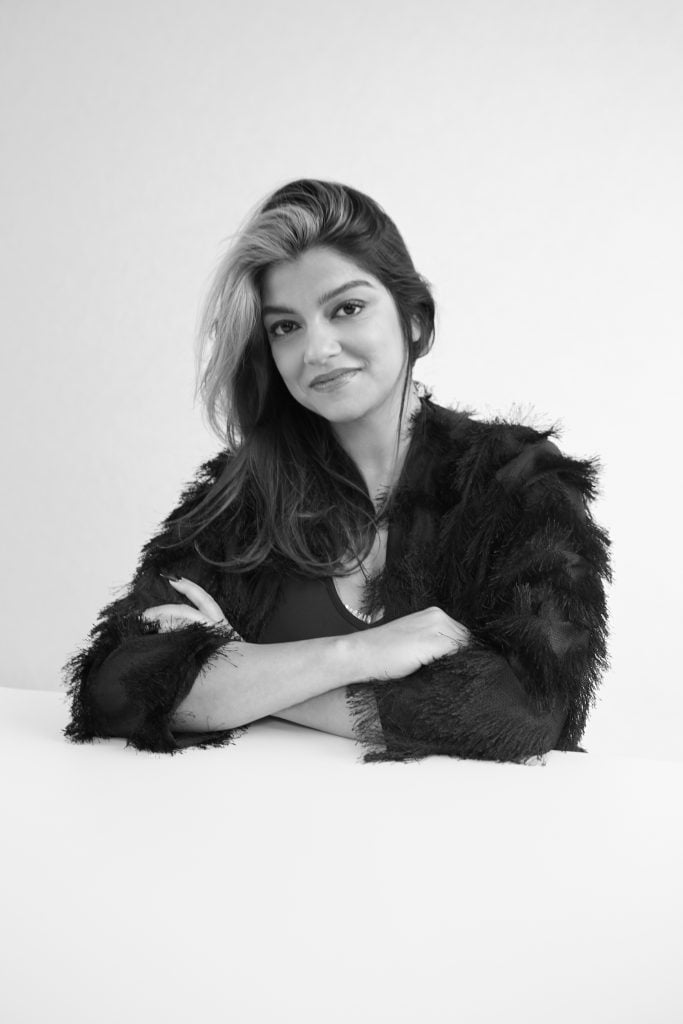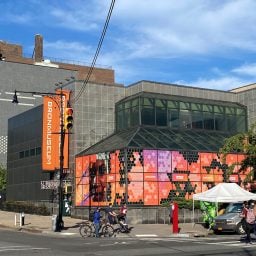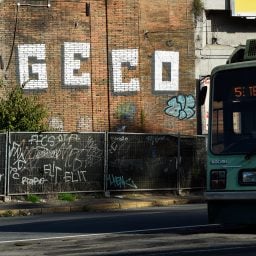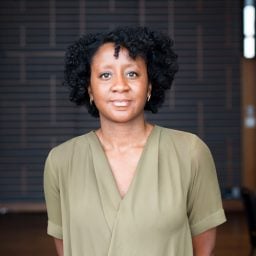I discovered the work of curator Jasmine Wahi on Instagram, where she posts powerful meditations on politics, art, and the intersections between the two as @browngirlcurator. Since February, Wahi has served as the Holly Block Social Justice Curator at the Bronx Museum, which I found particularly intriguing at a time when questions about the role of social justice in museums have been amplified in the wake of recent Black Lives Matter protests.
Earlier this month, I spoke to Wahi about Black visibility in the art world; what can be done to activate change; her ambitions for Newark’s Project for Empty Space, the initiative she founded in 2010 to create safe and equitable spaces for audiences and artists alike; and why, in order for museums to cultivate trust, empathy, creativity, and diversity, they should all have a social justice curator on staff.
What work can museums and art institutions do to battle racial bias in the art world?
OK, where do I start?! The first place institutions—not just art institutions, but widely—should begin is internally. Racial bias—or, to speak plainly, racism—is rampant within many art institutions.
It’s reflected in hiring practices; in internal day-to-day interpersonal dynamics that are both overtly effrontery and micro-aggressive; in the historic and habitual preferential treatment of white male artists over anyone else. It’s reflected on museum walls and in patronage.
I think one of the reasons racism is so endemic is because most (not all) institutions were founded to preserve a type of history, which is only now being reconciled and recognized as singular and exclusionary.
There are so many ways to divest of this legacy, and to renovate the architecture of our power structures. Hire more BIPOC across all divisions of an institution. There has been a myth floating around for as long as I can remember that there aren’t “enough” qualified BIPOC workers in the field. I can rattle off a list right now of BIPOC who would be excellent candidates for many of these positions.
Actively listen to your BIPOC staff: We’re not here to fulfill a quota or to melanate the flyers. By the same token, we’re not here to be heard only when the question is about race, diversity, and inclusion.
Do not rely on your BIPOC staff as de facto educators. Unless we are explicitly hired for that role, it is not our purview, or frankly, our interest to take on the extra work of educating our peers. There are many tools available for people to educate themselves. Alternatively, institutions should invest in hiring a professional educator.
The forward-facing way that institutions can support the fight for racial equity and social justice is by making a wee bit more of an effort. I realize that this sounds flippant, but the fact is there are so many incredible BIPOC artists who deserve to have their work amplified. The question is whether or not an institution actually wants to show those artists.
I’ve heard many arguments about why BIPOC art isn’t more prominent or visible (it’s hard to fundraise, these artists aren’t known, etc.). These aren’t legitimate arguments, they’re excuses. I can name at least 30 artists off the top of my head whose work I would love to see in a publicly accessible space.
That leads to the next step, which is audience. Institutions can make a much greater effort in outreach to communities of color. It’s not enough for us to be on the wall, to be consumed by predominantly white and wealthy audiences—we need to be in communion with our communities.
A final strategy would be to reduce or omit museum fees; paywalls to access culture keep people out. I realize this is an unrealistic expectation in the current moment—it requires an entire system overhaul. But it’s still worth putting out as a strategy.

Installation view, “All the women. in me. are tired” at the Club Tokyo (2020). Photo courtesy of the Club Tokyo.
How are you looking to incorporate these values into your work at the Bronx Museum?
I hope that my forthcoming exhibitions and the programs I’m developing with our education department will reflect the points I’ve outlined. One of the things I think about constantly is who the exhibition is for. I don’t believe in centering a singular audience. I think very carefully about the layered messages within the exhibitions, and about embedding and amplifying the stories that have been hidden in a larger discourse.
What is a social justice curator? Should all museums have one?
A social justice curator is a cultural worker who creates exhibitions that prompt dialogue and subsequent change towards a more socially equitable and just society. I think an alternative title would be “visual activist”—a person who believes in the symbiotic relationship between art and social change.
I’m not sure how many social justice curators there are currently. I think for now, every institution should have at least one SJC. I hope that one day there won’t be a need for such a position. But until then, I think it’s important to have a staff person who is dedicated to amplifying narratives and histories that have historically been ignored, unseen, or invisibilized by institutions.
I do want to acknowledge that there are a lot of curators already doing this type of work in large institutions, although their titles may not explicitly say “social justice curator.” A few who come to mind immediately are Rujeko Hockley, who co-curated the last Whitney Biennial with Jane Panetta; Carmen Hermo at the Brooklyn Museum; Legacy Russell at the Studio Museum in Harlem, and Kimberli Gant at the Chrysler Museum.
One call to action that has been made in the past is to implement quotas to ensure diversity—a model that is often criticized for undermining meritocracy. What strategies do you believe art institutions should be fostering to increase visibility within their ranks?
I find this argument to be so frustrating. It perpetuates a myth that is, frankly, rooted in systemic racial bias. The idea that there is currently a meritocracy within any institution (art and non-art alike) is a complete fallacy.
Without naming names, I can say with zero doubt that there are plenty of mediocre white men in positions of power who have not risen through the ranks based on their intellectual or creative prowess. I don’t say this to dismiss or discount the many talented white men who do good work, but rather to demonstrate the myth that we’re working under a system where good work reaps rewards.
Our systems are built on inequity and a valuation of wealth and whiteness over genuine creative talent. I said I could make lists of BIPOC cultural workers who should be in institutional spaces—and I’m just one person with a very small network.
I don’t believe in “filling quotas” to fill quotas, but the critique of that methodology discounts the fact that there is a basic threshold for talent. It asserts that the only criteria for getting those coveted jobs is race, which is unequivocally untrue. I posit that that particular mindset is part and parcel of the continued microaggressions and dismissal of BIPOC in institutional spaces. If you hire people based on the assumption that they were only hired to fulfill a quota, of course you’re going to treat them like the help.
So the short answer to your question is continue to hire BIPOC. You don’t have to sacrifice talent for the sake of a quota—there are innumerable talented BIPOC cultural workers in the mix already.
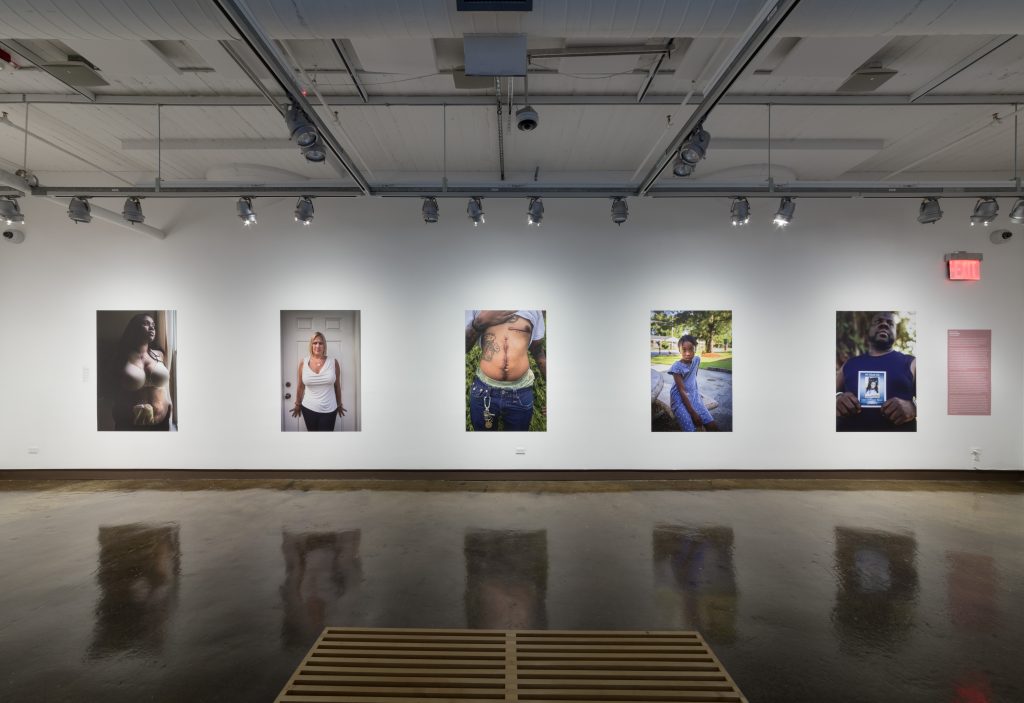
Installation, “American Truth,” SVA Gallery. Photo courtesy of SVA Gallery.
What do you think about the public statements made by arts institutions in support of Black Lives Matter following the death of George Floyd? Should galleries and museums make statements on contemporary crises?
I’m torn. The more emails I get, the more perplexed I feel—I wonder where all of these institutions have been for the past five, 10, 15, 20, 400-plus years. It disheartens me that it’s taken this storm of a medical pandemic, working from home, and another year of rampant violence against Black people to get museums on board with reality. Better late to the party than never, I guess. And to that point, some museums have been doing the work for a while without advertising it widely.
But from this moment on, how many institutions are going to follow through with action? How many have outwardly perpetuated a violence of sorts (intentionally or not) onto their BIPOC employees and communities? Are these messages of solidarity actionable, or just performative virtue-signaling? Only time will tell.
I understand many institutions feel stuck in between a rock and a hard place. I think the sentiment I saw on a protest sign recently, “Silence is violence,” is resonating loudly with institutions. But are empty words any better?
I don’t think that all institutions are being performative, but I do think that there is a lot of hard work to be done. I’d rather see the fruits of that labor later than hear about a plan ahead of time.
Is it as simple as “buy/acquire/show more Black art”?
Yes and no. That’s basically a non-answer, but there is a rationale, I promise! One hundred percent buy, acquire, and show more art by Black artists. Collect with intentionality and reverence, and exhibit with the same level of care. Here is where the “no” comes in—it’s not enough just to buy and acquire. Who is putting those exhibitions together? What is the agenda of the curator? What is the agenda of the institution?
Art by Black artists needs scholarship. Value should not be dictated by hammer price. The longevity of Black art is in legacy, and legacy has to be built through respect, attention, and intellectual investment.
We have to be conscientious of the following questions: Who is writing this scholarship? Is it amplifying the artist’s voice, or is it perpetuating an us/them dichotomy? How does that scholarship then get dispersed? Is it written into “the canon”? Is there a way to let multiple “canons” exist simultaneously and laterally?
All of these questions need to be considered as we move forward, and applied to all BIPOC art worlds. We need to move out of market-driven bubbles into long-term sustainability and history.

Installation, “Abortion Is Normal” at Eva Presenhuber and Arsenal Contemporary. Photo courtesy of Project for Empty Space.
If you had free reign to change anything in the art world pertaining to this issue, what would you change? What is the most urgent action?
Ha! I am a Pisces with ADHD—under no circumstance could I ever pick just one thing. But, OK—right now, at this exact moment, I would enforce top-down anti-bias training. This is training that institutions should invest in. Under no circumstances should museums expect their BIPOC staff to take up the task of educating everyone.
Remember: There is absolutely no shame in hiring a professional to make an institution a more inclusive and equitable space for the long haul. This is a moment when declarative emails of solidarity will only hold up for so long before people demand to see tangible outcomes. So hire a professional, and then practice what they preach.
You founded Project for Empty Space in 2010. Was this project born because you felt museums were failing to create sufficiently safe spaces?
Project for Empty Space started as a way to experience the type of art that we weren’t seeing in galleries at the time. We wanted to create exhibitions for our communities that extended beyond the limitations of the market at a time when the commercial world was in peril (PES was founded shortly after the 2008 economic crash).
When it started, Project for Empty Space was nomadic and nimble. Now that it has a more permanent home and operates on a larger scale, our focus is on creating more opportunities for artists who are interested in social discourse and activism.
As we move forward, our plan is to expand the opportunities we can offer artists. We had plans to reinvigorate our public programs and public art interventions (for example, my partner, Rebecca Jampol, recently curated a massive mural project in downtown Newark, where we’re located).
We also have a plan to expand our community resources; we have an intersectional feminist reading room in our space that we’re always collecting materials for. We’re not yet sure how some of these interactive programs will be impacted in the coming months of social distancing, but I’m hopeful we’ll eventually be able to resume them.

Work by Chaya Babu, Camille Lee, katherine Toukhy, and Christen Clifford. Courtesy of Project for Empty Space.
Let’s talk resources. What’s on your bookcase? What films do you want everyone to see?
How many do you want?! Because I have a lot, but they’re pretty wide-ranging.
Books:
Freedom Is a Constant Struggle: Ferguson, Palestine, and the Foundation of a Movement, Angela Y. Davis
Pleasure Activism: The Politics of Feeling Good, Adrienne Maree Brown
The White Card: A Play, Claudia Rankine
Feminism Is for Everybody, bell hooks
Black Looks (specifically “Is Paris Still Burning?”), bell hooks
My Beautiful Laundrette, Hanif Kureishi
The Earthseed Series (“Parable of the Sower,” “Parable of the Talents”), Octavia Butler
How To Be an Anti Racist, Ibram X. Kendi
Films:
Paris Is Burning, directed by Jennie Livingston with Andre Christian, Dorian Corey, Paris Duprée, Pepper LaBeija, Junior Labeija, Willi Ninja, Sandy Ninja, and Kim Pendavis
Born in Flames, Lizzie Borden
Tongues Untied, Marlon Riggs
Portrait of Jason, Shirley Clark
13th, Ava Duvernay
When They See Us, Ava Duvernay
